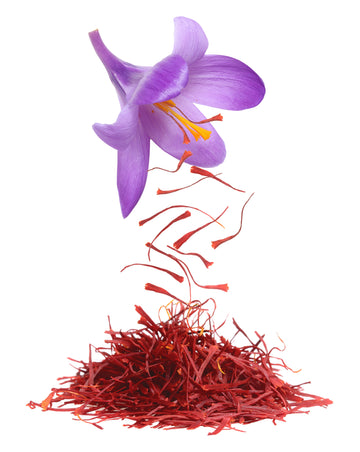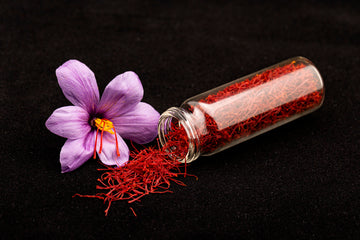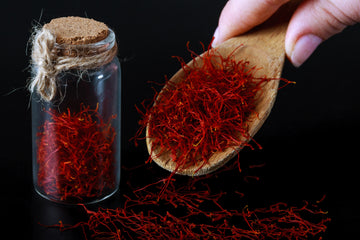
The Saffron Bazaar: Trends, Challenges, and Opportunities
Welcome to a world steeped in history, flavor, and sheer luxury—the saffron market. As you embark on this journey, prepare to be captivated by the intricate tapestry of trends, challenges, and opportunities that shape the realm of this revered spice. In this detailed blog article, we dive deep into the saffron market, unraveling its fascinating dynamics and providing you with invaluable insights that will set you apart in this competitive landscape.
Join us on this insightful journey through the saffron market, where we unlock the secrets, navigate the challenges, and embrace the boundless opportunities that await those who dare to venture into the captivating world of saffron. Whether you're a seasoned industry professional or an intrigued enthusiast, this comprehensive blog article equips you with the knowledge and foresight to make informed decisions and seize the advantages within this enchanting market.
Growing Demand and Consumption Patterns
The demand for saffron has been on a steady rise globally. One of the key drivers of this demand is the increasing popularity of international cuisines, where saffron plays a vital role in enhancing flavors and adding vibrant colors. Consumers are also becoming more health-conscious and are actively seeking natural and organic alternatives to artificial food additives. Saffron, with its rich antioxidant properties and potential health benefits, perfectly aligns with these consumer preferences. [1]
A notable example of growing saffron consumption can be observed in the Middle East, particularly in countries like Iran, which is the largest producer and consumer of saffron. The regional culinary traditions heavily rely on saffron, leading to a surge in local demand. [2]
Emerging Market Opportunities
As the awareness and appreciation for saffron continues to spread, new market opportunities are emerging in different regions. This is particularly evident in Asia, where countries like India, China, and Japan are witnessing a significant surge in saffron consumption. The rise of the middle class, increased disposable income, and changing food habits are contributing to the growth of the saffron market in these regions. [3]
In India, saffron is traditionally used in various sweets, rice dishes, and beverages. However, with the growing popularity of global cuisines, Indian consumers are exploring new culinary experiences, leading to increased demand for saffron-infused dishes like biryanis, pastas, and desserts.
Quality Control and Product Authenticity
One of the major challenges faced by the saffron market is ensuring product authenticity and quality control. Saffron is a high-value spice, making it susceptible to adulteration and counterfeiting. [4] Buyers often encounter fraudulent practices where inferior or fake saffron is sold at premium prices. This poses a significant risk to both consumers and genuine saffron producers.
To combat this challenge, some saffron-producing regions have introduced certification systems and quality control measures. For instance, the "Kashmir Saffron" from India has obtained Geographical Indication (GI) status, assuring consumers of its authenticity and quality.
Sustainable and Ethical Sourcing
As consumer awareness about sustainability and ethical practices increases, there is a growing demand for saffron that is sourced responsibly. Consumers are keen to support brands that prioritize fair trade, environmentally friendly cultivation methods, and the welfare of farmers.
Several saffron brands are now adopting sustainable sourcing practices and working directly with farmers to ensure fair wages and safe working conditions. By doing so, they not only meet the growing demand for ethically produced saffron but also establish long-term partnerships with local communities.
Conclusion
The saffron market is witnessing an upward trajectory, driven by factors such as increased global demand, emerging market opportunities, and changing consumer preferences. However, challenges related to product authenticity, quality control, and sustainable sourcing need to be addressed to ensure the long-term growth and success of the saffron industry. By staying abreast of the latest market trends and leveraging emerging opportunities, businesses and consumers can benefit from the unique and valuable offerings of this exquisite spice, ultimately fostering a thriving saffron market for years to come.
References
- Maryam Mashmoul, Azrina Azlan, Huzwah Khaza’ai, Barakatun Nisak Mohd Yusof, and Sabariah Mohd Noor. 2013 Oct 29. Saffron: A Natural Potent Antioxidant as a Promising Anti-Obesity Drug. https://www.ncbi.nlm.nih.gov/pmc/articles/PMC4665515/
- Sonnino, R. (2007). Embeddedness in action: Saffron and the making of the local in southern Tuscany. Agriculture and human values, 24, 61-74. https://link.springer.com/article/10.1007/s10460-006-9036-y
- Everett, S., & Aitchison, C. (2008). The role of food tourism in sustaining regional identity: A case study of Cornwall, South West England. Journal of sustainable tourism, 16(2), 150-167. https://www.tandfonline.com/doi/abs/10.2167/jost696.0
-
Hagh-Nazari, S., & Keifi, N. (2006, October). Saffron and various fraud manners in its production and trades. In II International Symposium on Saffron Biology and Technology 739 (pp. 411-416). https://www.actahort.org/books/739/739_54.htm





